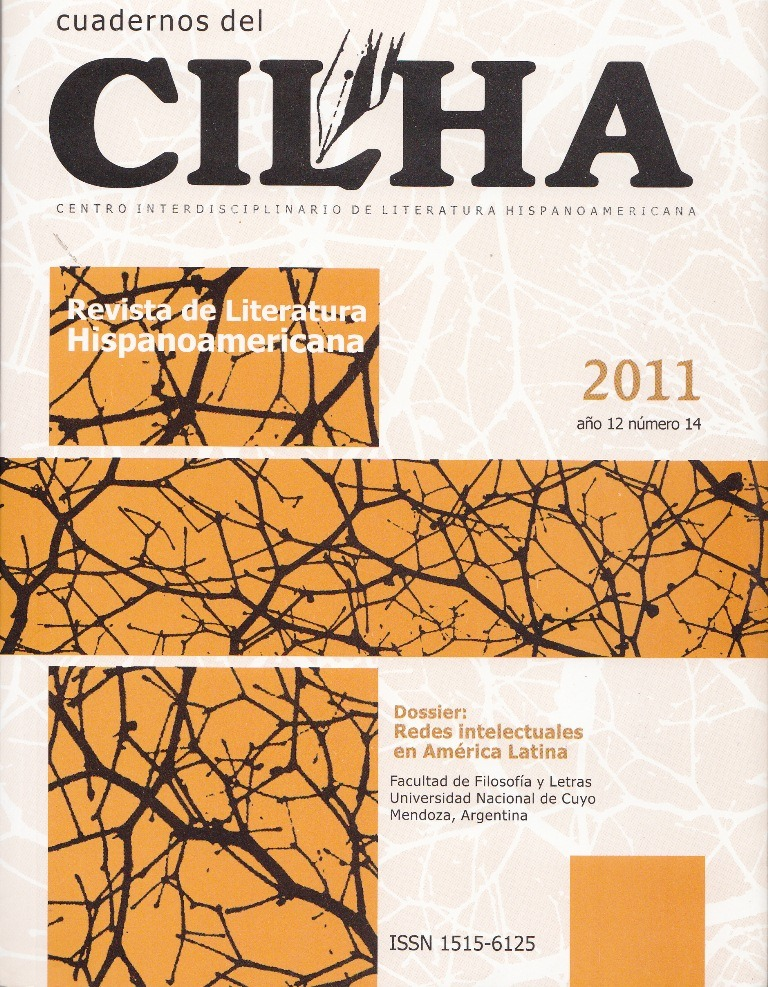Portinari’s murals at the Hispanic Room of the United States’ Library of Congress:
the building of a Panamerican identity through the arts.
Keywords:
Net, Pan-Americanism, Portinari, Exhibition, RockefellerAbstract
On the edge of its engagement in World War II, United States’ government implemented a program of cultural and commercial interchanges with Latin America in order to protect its interests in the hemisphere and to counterattack the influence exerted by the Axis. The agency responsible for this mission was the Office of the Coordinator of Inter American Affairs, leaded by Nelson Rockefeller. To meet this goal, OCIIA engaged, as advisers or members of staff, representative and influential citizens from a variety of spheres. A strong Pan-American net expanded towards Latin America and established ties with artists, intellectuals and politicians that shared the same common enemy: Nazism and fascism, their values of ethnic superiority and of a political system based on dictatorship. In the visual arts section, OCIIA dedicated mostly to organize and circulate exhibitions in the States and in Latin America. Occasionally, OCIIA also founded artistic projects, as was the case with the four murals painted by Brazilian artist Candido Portinari at the Hispanic Room of the Library of Congress. Portinari’ s art poetic and ideology, as well as his previous work in the States, eased Pan-Americanism’ s objectives. The murals built a multicultural hemispheric identity through the arts, an identity based on respect for racial and cultural diversity. At the same time, the murals reflected the artist’s social concerns, and affirmed the creative possibilities of American people to produce an alternative modern process.
References
Bennett, Tony. The birth of the Museum: History, Theory and Politics. London/New York: Routledge, 1995.
Cockroft, Eva. "•The United States and Socially Concerned Latin American Art"–. En: AA.VV. The Latin American Spirit: Art and Artists in the United States, 1920-1970. Nueva York: Museo de Artes del Bronx-Harry N. Abrams, 1989: 184-221.
Daly, Karen. Candido Portinari. Brazilian artist as cultural ambassador. A re-examination of the Library of Congress murals. Tesis de maestria. Virginia Commonwealth University, Richmond, Virginia, mayo 1995. Archivo Projeto Portinari, Pontificia Universidad Católica, Río de Janeiro.
Do Prado Valladares, Clarival. Análise Iconográfica da Pintura Monumental de Portinari nos Estados Unidos. Rio de Janeiro: Museu Nacional de Belas-Artes, 1975.
Duberman, Martin. The worlds of Lincoln Kirstein. Evanston: Northwestern University Press, 2008.
Fabris, Annateresa. Cândido Portinari. São Paulo: Universidade de São Paulo, 1996.
Ferguson, Bruce. "•Exhibition Rhetorics: material speech and utter sense"–, en Greenberg, Reesa, Bruce Ferguson y Sandy Nairme (ed.), Thinking about Exhibitions. Nueva York: Routledge, 1996.
Giunta, Andrea (Comp.). Cándido Portinari y el sentido social del arte. Buenos Aires: Siglo XXI, 2005.
Guilbaut, Serge. How New York stole the idea of the modern art – abstract expressionism, freedom, and the cold war. Chicago: The University of Chicago Press, 1985.
Karp, Ivan and Lavine, Steve (Ed). Exhibiting Cultures. The Poetics and Politics of Museum Display, Washington DC and London: Smithsonian Institution Press, 1991.
Maiz, Claudio; Fernádez Bravo, Álvaro (eds). Episodios en la formación de redes culturales en América Latina. Buenos Aires: Prometeo, 2009.
Pedrosa, Mario. "•Portinari - de Brodósqui aos murais de Washington."– En Amaral, Aracy (org). Dos murais de Portinari aos espaços de Brasília. São Paulo: Perspectiva, 1981.
Prutsch, Ursula; Cramer, Gisela. "•Nelson A. Rockefeller’s Office of Inter-American Affairs"–. Hispanic American Historical Review, vol. 86, no.4, nov. 2006: 785-806.
Rowland, Donald. History of the Office of the Coordinator of Inter-American Affairs. Historical Reports on War Administration. Washington: United States Government Printing Office, 1947.
Serviddio, Fabiana. "•Intercambios culturales panamericanos durante la Segunda Guerra Mundial. El viaje de Pettoruti a los EE.UU.."–. En: María Amalia García, Luisa Fabiana Serviddio y María Cristina Rossi, Arte Argentino y Latinoamericano del Siglo XX: sus interrelaciones. Buenos Aires: Fundación Telefónica de Argentina, Fundación Espigas y El Fondo para la Investigación del Arte Argentino (FIAAR), 2004: 55-82.
Serviddio, Fabiana. "•Muestras latinoamericanas durante la 2da Guerra: la exhibición como articulación de la identidad."– En Herrera, María José (ed.). Exposiciones de arte argentino y latinoamericano: curaduría, diseño y políticas culturales. Córdoba: Asociación Argentina de Críticos de Arte y Universidad Nacional de Tres de febrero (UNTREF), en prensa.
Smith, Robert. "•El arte de Cándido Portinari"–, en Portinari de Brasil, Cat. Exp. Nueva York: The Museum of Modern Art, 1940.
Smith, Robert. Murals by Cândido Portinari. Washington: The Hispanic Foundation of the Library of Congress, 1943.Tota, A. P. O imperialismo sedutor: a americanização do Brasil na época da Segunda Guerra. São Paulo: Companhia das Letras, 2000.
Zanetti, Susana. "•Modernidad y religación: una perspectiva continental (1880-1916)"–. Em: Ana Pizarro (org.), América Latina: Palabra, Literatura e Cultura. Volume 2: Emancipaçao do Discurso. Sao Paulo: Memorial da América Latina, Unicamp, 1994: 489-534.












































